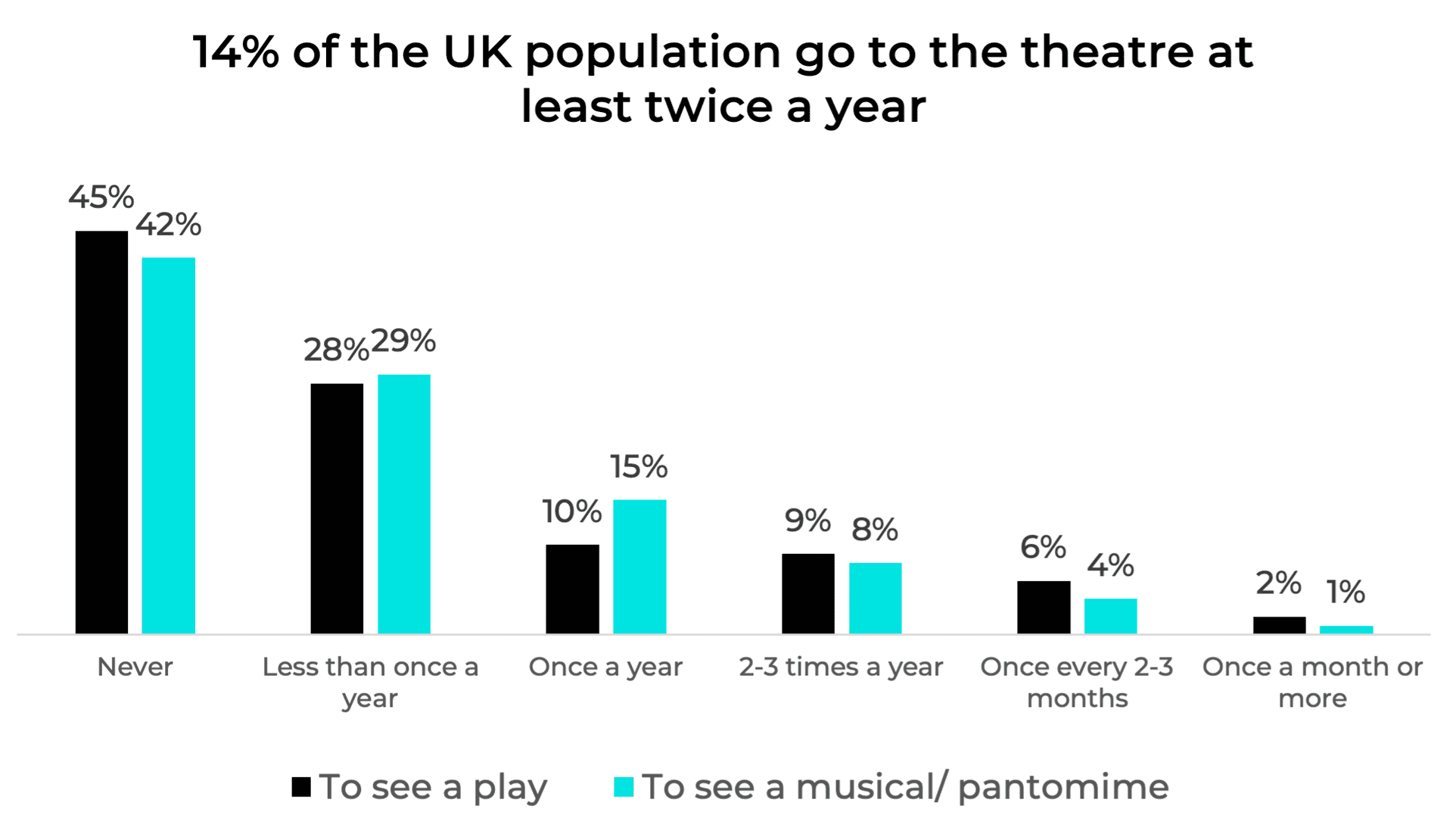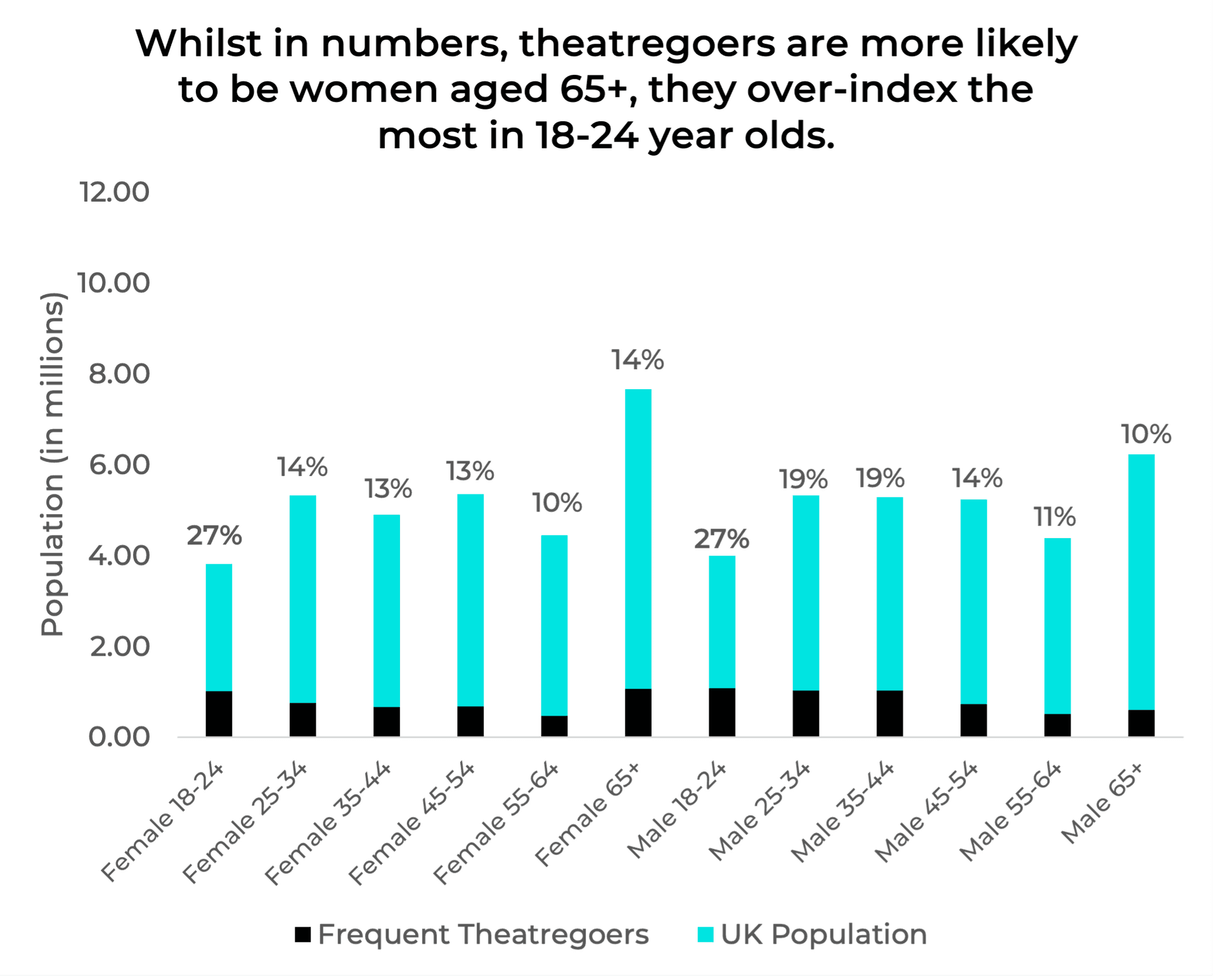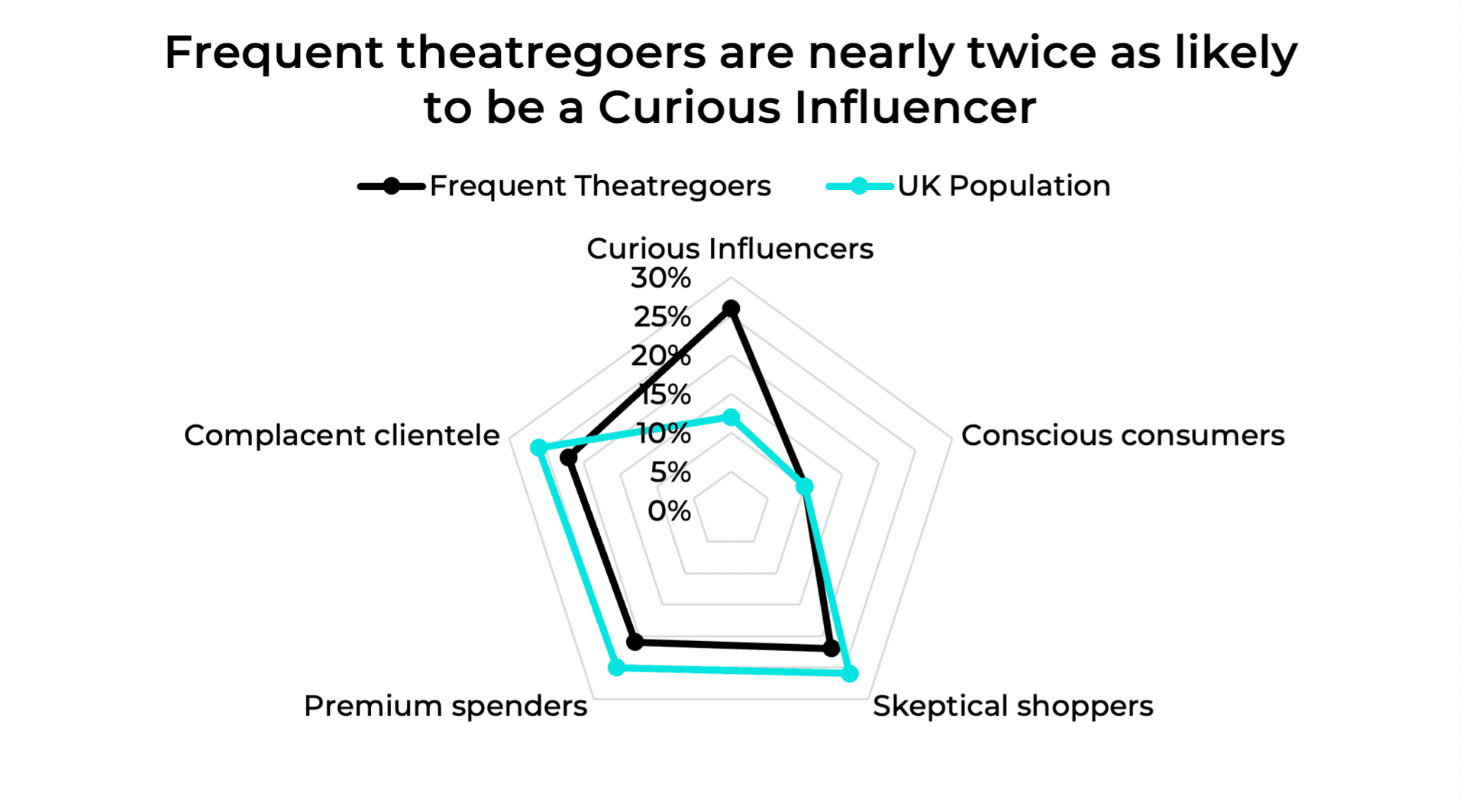
Redefining Theatre Audiences: The New Faces of Frequent Theatregoers
A pandemic, train strikes, the cost of living crisis...the past few years have shown us that nothing stops a dedicated theatre fan from seeing their favourite shows.
But who are our most ardent theatregoers?
“Nice, respectable, middle-class, middle-aged, maiden lady, with time on her hands and the money to help her pass it. She enjoys pictures, books, music and the theatre”.
Terrence Rattigan, English playwright, 1953
This quaint stereotype of the average theatregoer from 70 years ago still has some truth in data today: in Broadway’s 2018-2019 season, 68% of audiences were women, while the average age of the Broadway theatregoer has hovered between 40 and 45-years-old for the past two decades.
However, the latest YouGov data on theatre attendance has unveiled some unexpected findings in the post-pandemic world. Things are starting to shift.
But to start off with: what do we mean when we talk about “frequent theatregoers”?
Around 14% of the UK population (9.4 million people) go to the theatre at least twice a year. Plays are slightly more popular than musicals, with 17% of the UK seeing a play at least twice a year.

Challenging the stereotype that theatre is predominantly a female pastime, 57% of frequent theatregoers are men.
While women aged 65+ still constitute the largest demographic in pure numbers (about 1.1 million people are female theatregoers aged 65+), this is mostly down to the UK’s growing ageing population. Actually, only 14% of women in this age group regularly go to the theatre.
A surprising trend emerges when we look at younger theatregoers: an impressive 27% of 18-24 year olds go to the theatre at least twice a year. What’s even more remarkable is that there is a gender balance here: this is evenly matched across both men and women.

So, the future for theatre is definitely looking bright. Millennials and Gen Z over-indexed the most for theatre attendance despite the cost-of-living crisis affecting them more than older groups.
This younger audience was also reflected in their other demographics: they are more than twice as likely to be a member of the LGBTQ+ community and 89% live in an urban area.
So how do we speak to these new, emerging younger theatregoers in a way that is authentic and relatable? Well, we need to start by understanding their lifestyle and motivations.
Younger generations have had a pretty rough time compared to previous generations. Millennials in particular entered young adulthood in the midst of the 2008 financial crisis and are expected to be the first generation who are worse off than their parents.
So what does that mean for their lifestyle and entertainment choices?
Meaningful Downtime
People in the UK work some of the longest hours in Europe. Because of this, downtime is immensely valuable and must have a clear purpose. Younger people are more likely to prioritise something that releases pressure and makes them feel good. In the theatre landscape, we’ve seen this reflected in the popularity of well-known, feel-good shows: think Back to the Future, Moulin Rouge! The Musical, Magic Mike Live and the recently announced The Devil Wears Prada.
The Lipstick Effect
If a Millennial/Gen Xer received a pound for every time they’ve been told “if you want a house, stop buying avocado toast”, they might actually be able to get on the housing market. But this popular debunked theory gives way to the more reliable 'Lipstick Effect'.
The lipstick effect is the idea that during economic downturns where saving for a house deposit is a multi-year endeavour, consumers tend to opt for more affordable luxury treats, such as a night out at the theatre.
In response to this, low-cost ticket initiatives have proved popular, such as Operation Mincemeat’s £39.50 Monday ballot and TodayTix’s Rush tickets.
The Influencer Generation
Younger generations live their lives online. In fact, 31% of 18-34 year olds spend more than 24 hours of their week online. Because of this, how a show markets itself on social media is incredibly important (you can read more about the changing landscape of social media here).
Younger audiences are using their social media to become mini-influencers: sharing their values, outlook on life and experiences with their social circles. According to YouGov’s consumer personalities segmentation, 26% of frequent theatregoers are Curious Influencers (14% higher than the national average).

What can we expect from a Curious Influencer in the world of theatre? Well, 62% like to stay up-to-date on the latest shows (so expect to see them on your sign-up list for news) and 76% like to recommend shows to their friends and family. They’re also more likely to be influenced by other people’s recommendations.
Curious Influencers are also active in the digital realm, especially discovery channels like TikTok and Instagram: they follow shows on social media, engage with paid social ads and don’t find ads annoying; they particularly enjoy video content.
Adapting to Theatre’s Changing Audiences
The theatre landscape is evolving and challenging stereotypes of who frequent theatregoers are. The exciting opportunity for shows and theatre marketers is how we can learn from this and appeal to younger generations without alienating older audiences.
In the next Digest we’ll be looking closer at these younger audiences and how we create fanbases both on and offline.